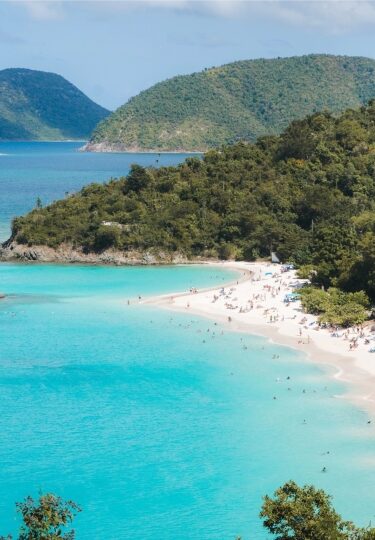The Puerto Rico vs. Virgin Islands vacation debate is a popular one. Both destinations offer year-round warm weather, stunning coastlines, and adventures for all skill levels.
At first glance, Puerto Rico and the Virgin Islands may seem quite similar, but the differences lie in the details. Puerto Rico, a U.S. territory, carries a strong Spanish cultural influence, while the U.S. and British Virgin Islands blend Danish and African influences. Whether you’re eager to try a new water sport or relax in the sun, these tropical destinations have something for everyone.
Weather & Best Times to Visit
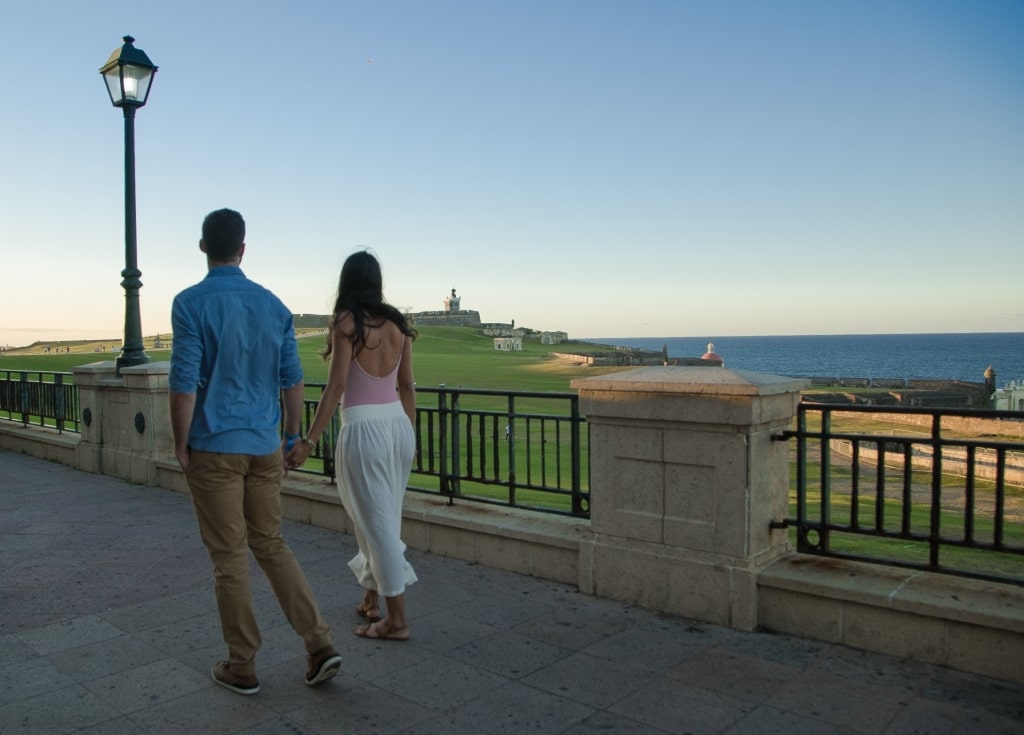
Castillo San Felipe del Morro, Puerto Rico
While Puerto Rico and the Virgin Islands share a tropical climate, a few differences may sway your decision.
Puerto Rico boasts year-round warm weather, with temperatures usually ranging from the mid-70s to mid-80s °F. Coastal areas are warmer, while regions like El Yunque are cooler due to their mountainous terrain.
Puerto Rico has three main seasons: dry season, from mid-December through mid-April; wet season, from May through October; and shoulder season, which falls between mid-April and mid-May and again from November to early December.
Dry season is your safest bet weather-wise, making it the most popular time to visit. Most days are sunny, with low humidity and occasional rain showers. The wet season has the highest rainfall and is less ideal for travelers seeking a beach escape. Shoulder season offers the best of both worlds, as there are fewer crowds to compete with.
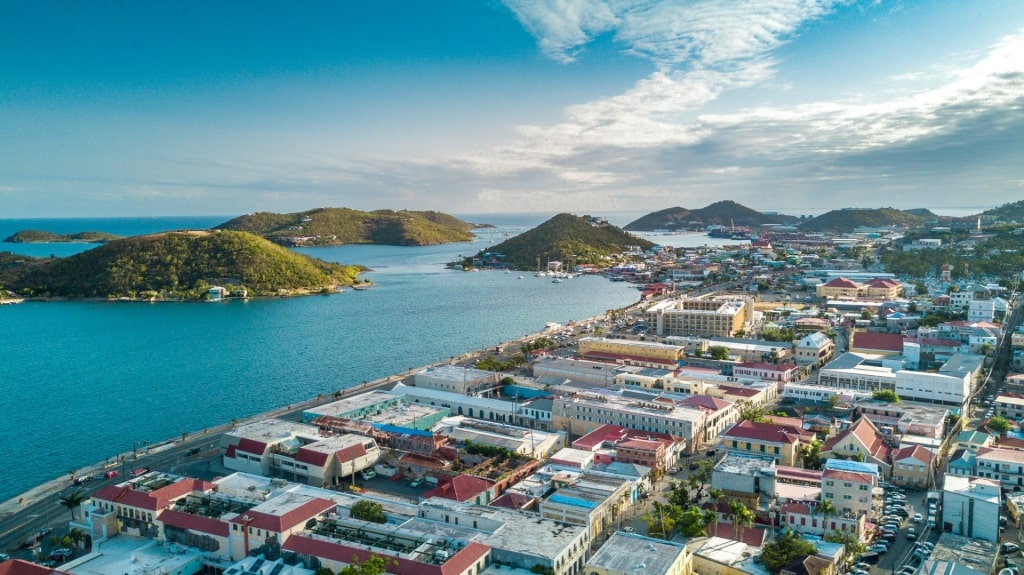
Charlotte Amalie, St. Thomas
The weather across the Virgin Islands is similar, with daily highs ranging from the high seventies to the high eighties. The steady trade winds keep the islands cooler than the actual temperature. February and March, which fall under the dry season, are dry and sunny and, therefore, popular among travelers looking for a winter escape.
Like Puerto Rico, September and October can be especially rainy and do fall into the hurricane season. Visiting in late spring through early summer brings good weather, few crowds, and slightly cooler temperatures.
History & Culture
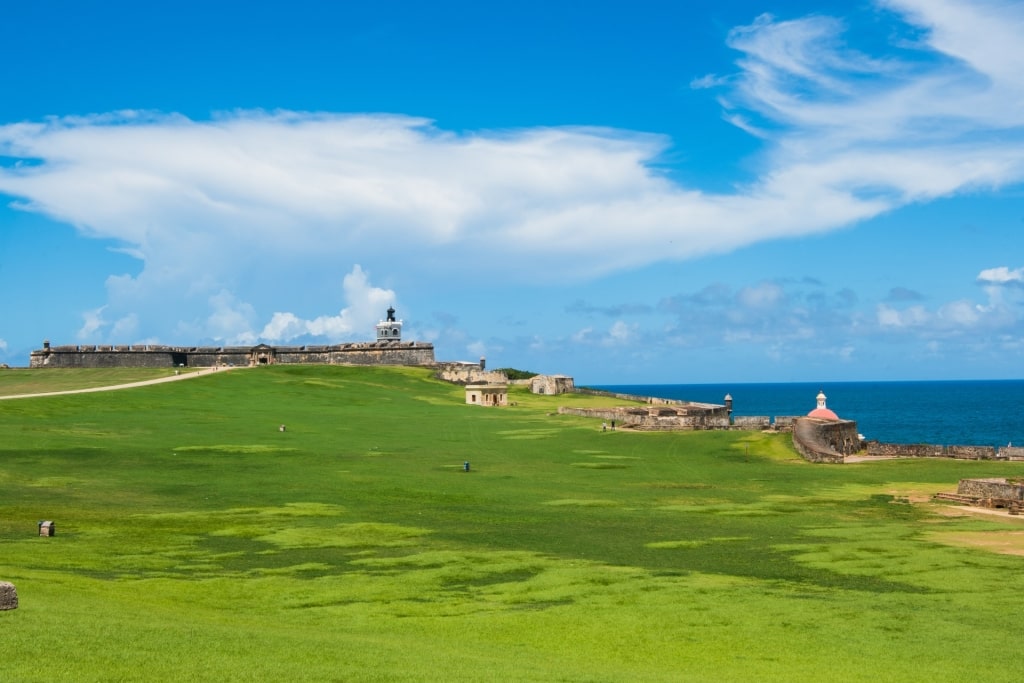
Castillo San Felipe del Morro, Puerto Rico
History plays a key role in shaping culture, and that’s especially true in both Puerto Rico and the Virgin Islands. While both destinations share a colonial past, there are a few notable differences.
Puerto Rico was a Spanish colony before becoming a U.S. territory in 1898, while the Virgin Islands were once under Danish rule before joining the U.S. in 1917. These influences are still visible today: Old San Juan is home to 16th-century Spanish forts and vibrant colonial architecture, while the Virgin Islands feature preserved sugar plantations, coastal forts, and historic Danish-era buildings.
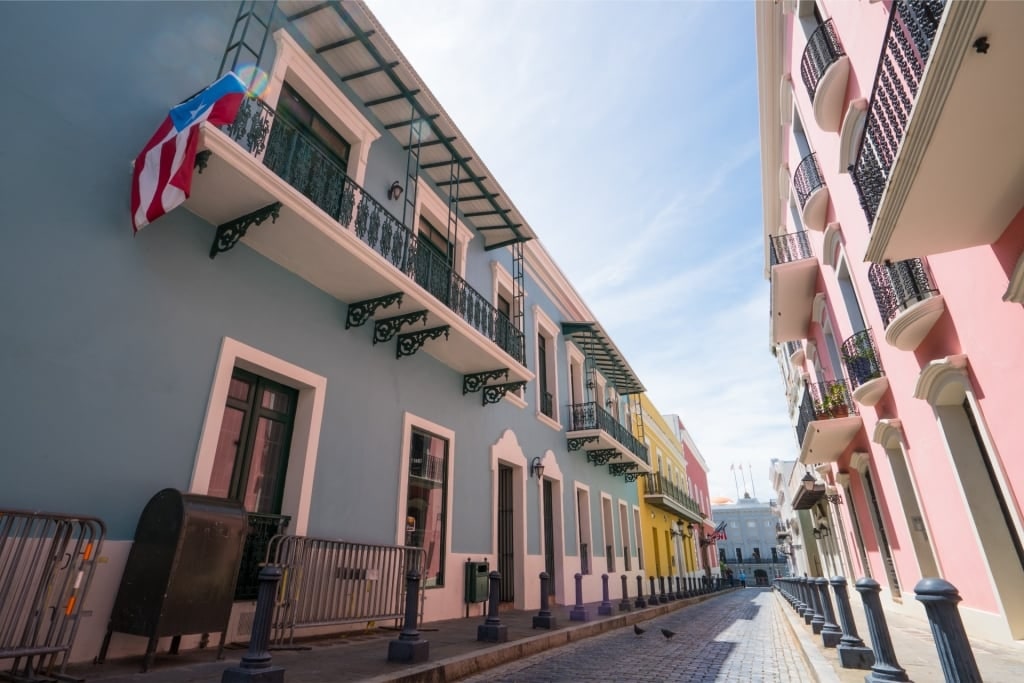
Old San Juan, Puerto Rico
Language also shapes local culture in Puerto Rico and the Virgin Islands. Most locals in Puerto Rico speak Spanish as their first language, while the official language in the Virgin Islands is English, with Creole dialects commonly spoken as well.
Salsa music and bomba are popular in Puerto Rico and are deeply rooted in its Afro-Caribbean heritage. Carnival parades, calypso, and quelbe music take center stage in the Virgin Islands.
Read: Puerto Rico Travel Guide
Outdoor Adventures
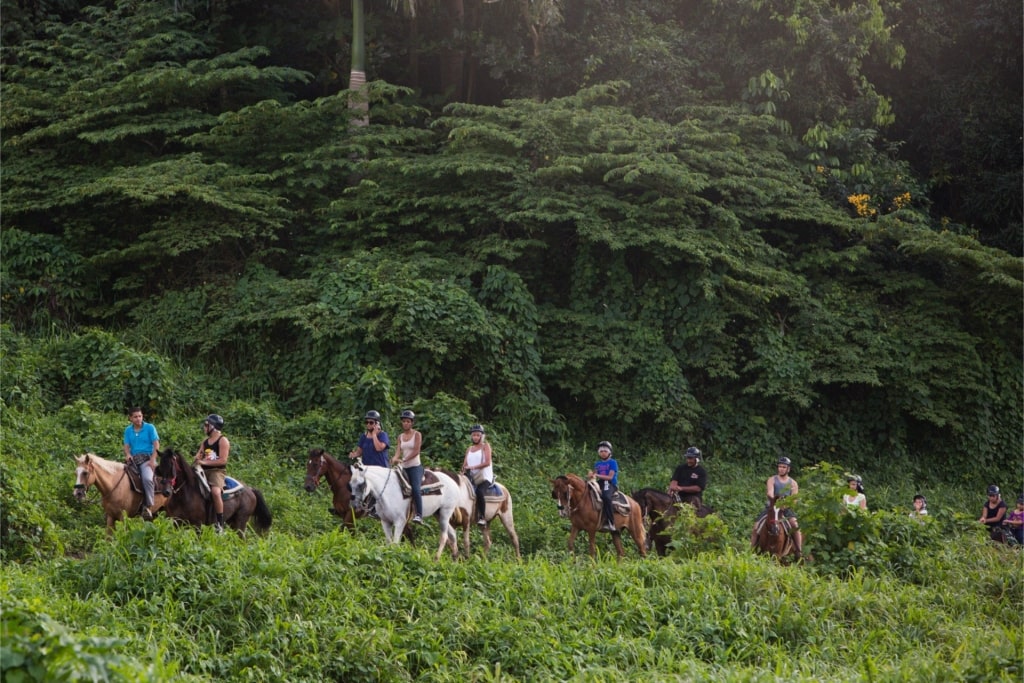
El Yunque National Forest, Puerto Rico
Both Puerto Rico and the Virgin Islands offer plenty of outdoor adventure. For hiking, Puerto Rico is home to El Yunque National Forest, a lush tropical rainforest with walking trails, waterfalls, and scenic views. The U.S. Virgin Islands, meanwhile, include the Virgin Islands National Park, which covers most of the island and includes pristine beaches and hiking trails for every skill level.
If water sports are more your scene, you can’t go wrong with either destination. When snorkeling in Puerto Rico, most travelers head to Culebra and Vieques, while Rincón is a popular spot for surfing, paddleboarding, jet skiing, and more. Trunk Bay in St. John is a standout in the Virgin Islands. It features an underwater snorkel trail with signs and buoys guiding snorkelers through coral reefs and diverse marine life.

Trunk Bay, St. John
Thrill seekers may find that Puerto Rico is a better fit. Cueva Ventana and Camuy River Cave Park offer limestone cave systems and make great day trips. Ziplining is another popular adventure activity, and several parks are located within a short drive of San Juan. The standout is Toro Verde Adventure Park, home to one of the longest ziplines in the world.
While Puerto Rico may offer more land-based adventure, the Virgin Islands are arguably better for travelers who prefer to stay on the water. Sailing excursions are a popular way to explore the islands and their many beaches, often including stops to snorkel and swim.
Culinary Experiences
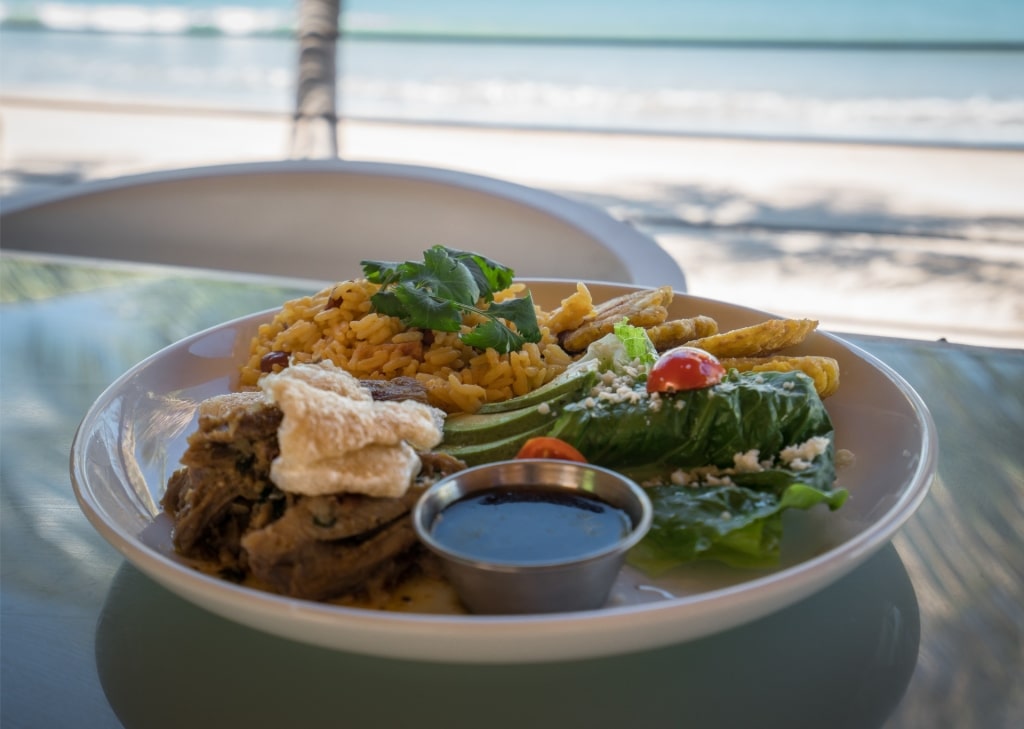
Puerto Rican food
You’ll definitely work up an appetite between outdoor adventure and time lounging on the beach. Luckily, Puerto Rico and the Virgin Islands are both perfect for food lovers.
Puerto Rican cuisine is rich in flavor and influenced by various cultures. Indigenous Taino ingredients are in many traditional dishes, including plantain, Spanish sauces, and African recipes. Barbecue is a Taino technique, so expect your fair share of fried dishes like mofongo, arepas, and alcapurrias.
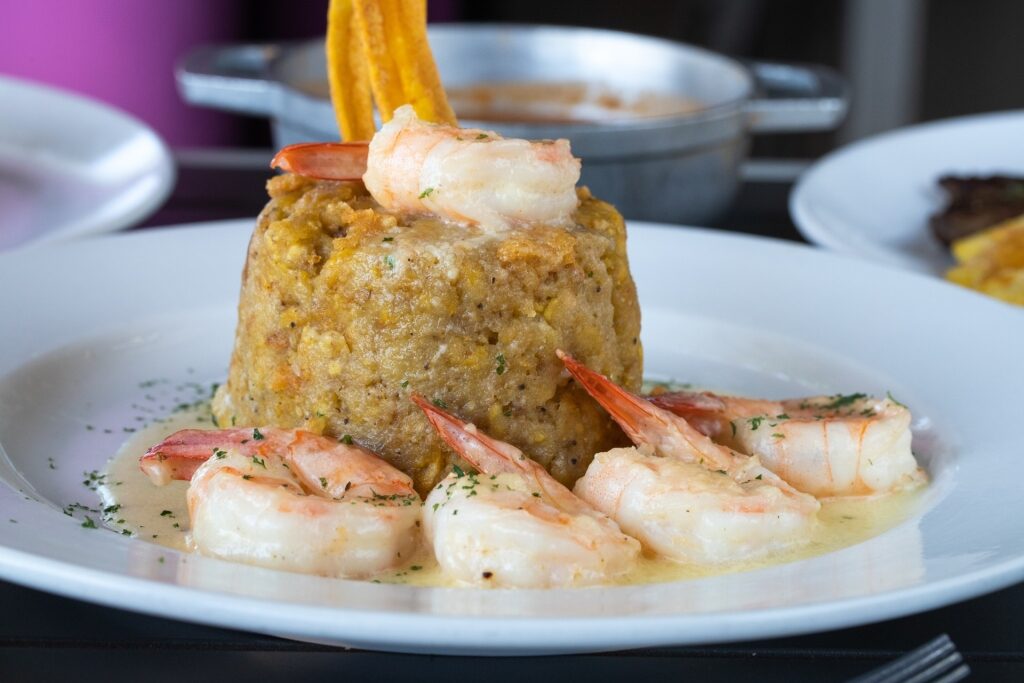
Mofongo
Mofongo consists of mashed green plantains and other ingredients like pork cracklings, garlic, and broth. Chefs typically serve mofongo with a protein like shrimp, chicken, or steak. Arroz con gandules is a savory rice dish with pigeon peas, while lechón asado is a whole roasted pig, usually served with rice and beans on the side. For dessert, don’t miss pasteles, a traditional treat made of masa filled with meat, wrapped in plantain leaves, and boiled.
Traditional food in the Virgin Islands also reflects the region’s history. Enslaved Africans transformed ingredients like saltfish, fungi, and taro leaves, or dasheen among locals into hearty, flavorful dishes. Another culinary influence comes from Indian workers, who introduced a flatbread filled with curries to the region, called roti.
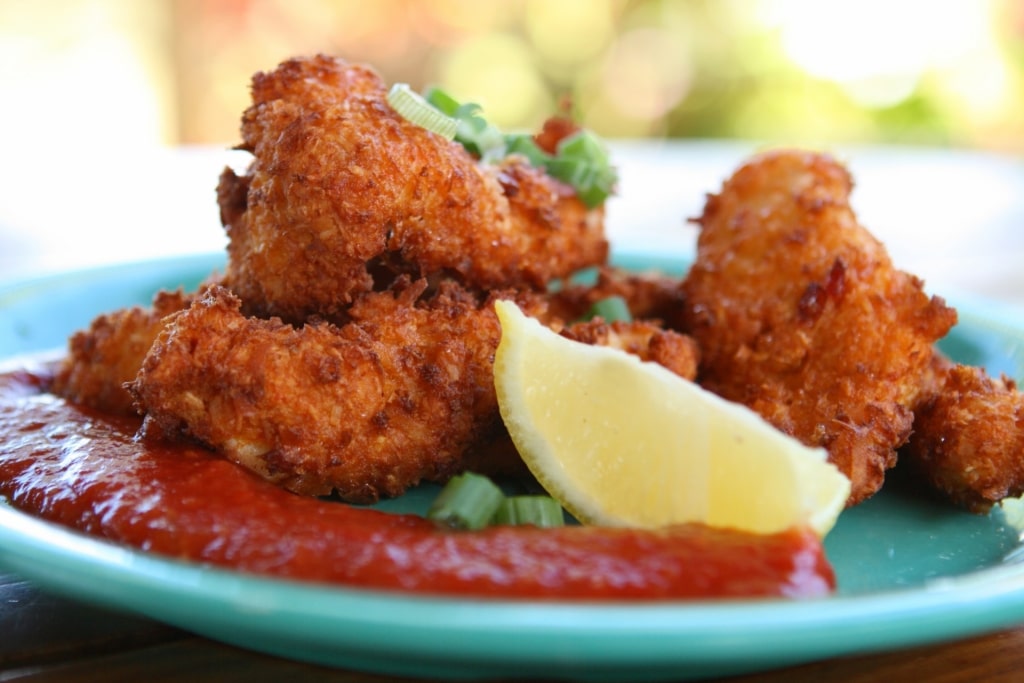
Conch fritters
Three of the most traditional dishes in the Virgin Islands are fish and fungi, conch fritters, and callaloo soup. Fish and fungi, which, incidentally, doesn’t include mushrooms, is a classic dish that pairs a cornmeal side with freshly caught fish. Though it may seem simple, Fish and fungi has historical roots dating back to the slavery era, when enslaved people grew okra and other vegetables to supplement their diets and fuel their bodies.
Chefs fry conch fritters, sometimes marinating them in lime juice or spicing them with scotch bonnet peppers, while they typically serve callaloo as a hearty soup or stew.
Beaches
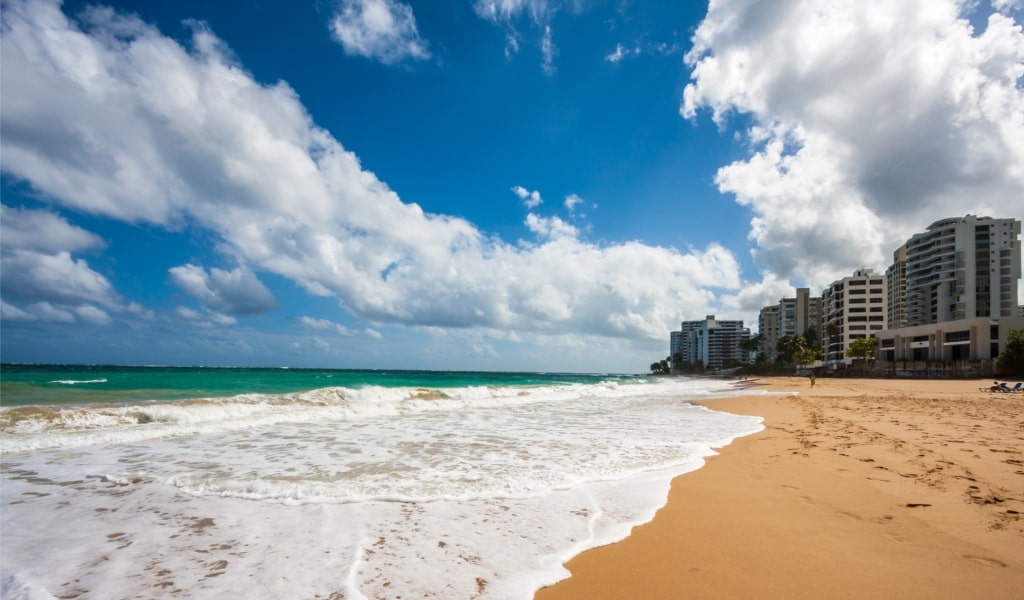
Condado Beach, Puerto Rico
Beach lovers will be spoiled for choice whether they head for Puerto Rico or the Virgin Islands. While the Virgin Islands are renowned for their picture-perfect, often untouched beaches, Puerto Rico’s beaches offer a more urban experience and are easily accessible from Old San Juan.
Located in the heart of San Juan’s Condado neighborhood, Condado Beach is one of the most convenient and traveler-friendly beaches in Puerto Rico. With shops, restaurants, and bars steps away, it’s ideal for a quick beach break before exploring the rest of Old San Juan. The soft sand is perfect for sunbathing, and should you want some shade, vendors rent umbrellas and lounge chairs. The waves can be rough here, so less confident swimmers and children are best off staying on the shore.
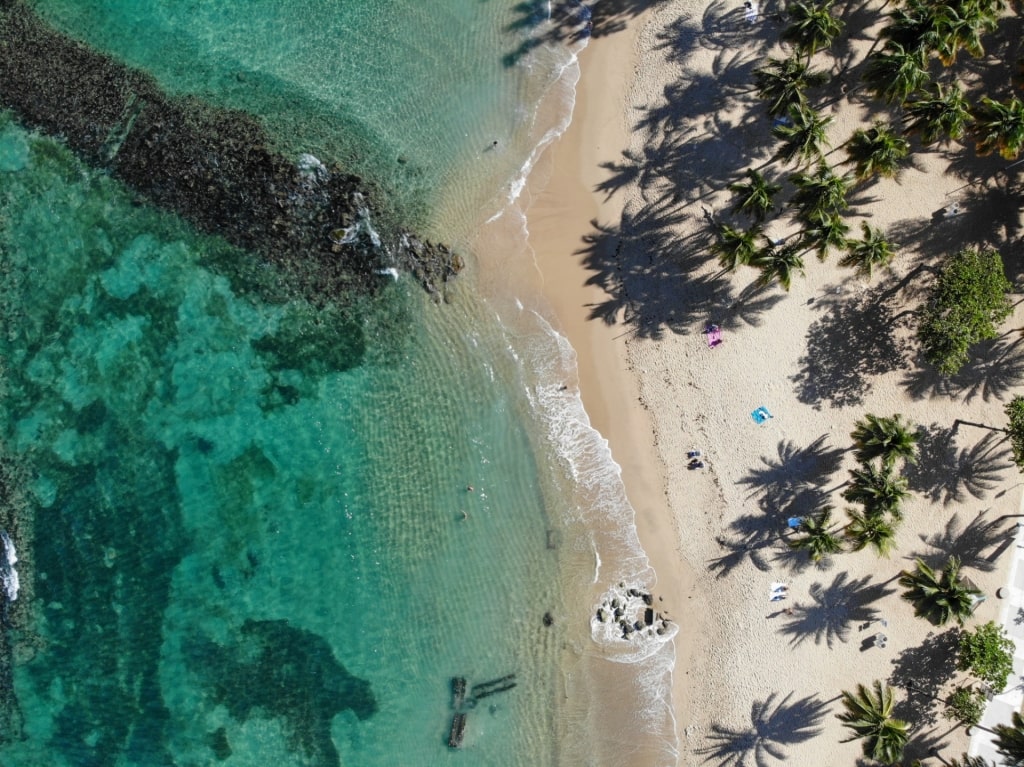
Escambrón Beach, Puerto Rico
Escambrón Beach is another one of Puerto Rico’s urban beaches and offers a family-friendly atmosphere and calm, clear water. A natural reef protects the bay, making it a much safer spot for swimming than nearby Condado Beach.
You won’t find waves big enough to surf here, but the calm conditions are great for snorkeling. The beach is next to the Luis Muñoz Rivera Park, blending ocean views with some greenery. There are shaded picnic areas on-site, so consider bringing snacks and making a day of it.
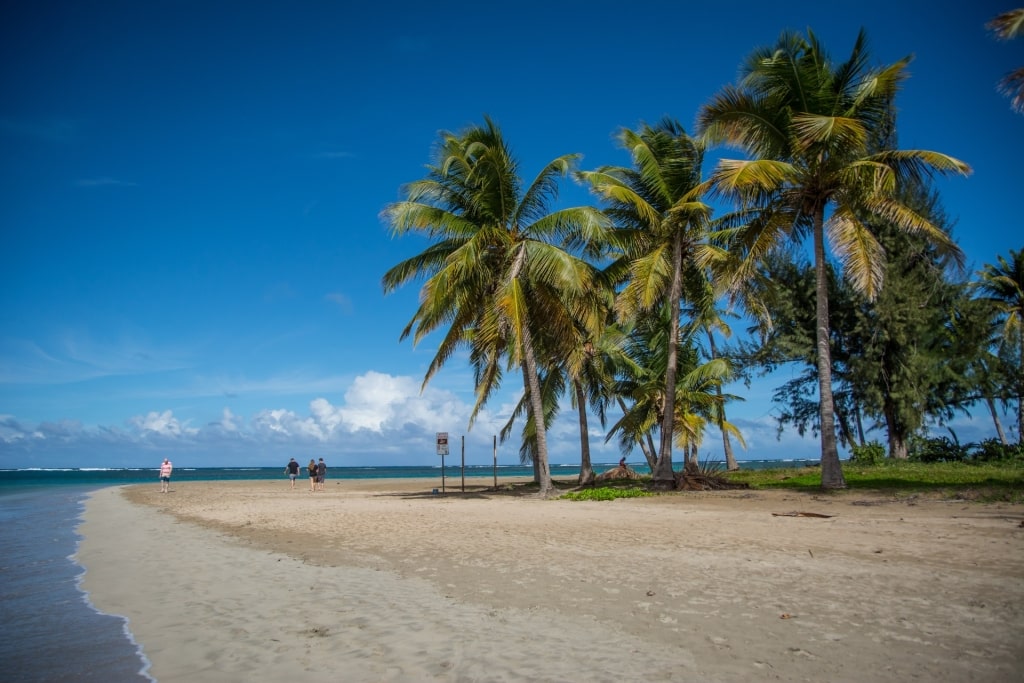
Luquillo Beach, Puerto Rico
For a less urban beach experience, less than an hour’s drive from San Juan, head toward Luquillo Beach. Definitely among the more family-friendly beaches in Puerto Rico, amenities here include bathrooms and changing areas, food kiosks, and picnic areas. Like Escambrón Beach, Luquillo Beach has a natural coral reef for swimming and snorkeling. More active visitors can participate in watersports like jet skiing, surfing, and kayaking.
As for the U.S. Virgin Islands, Trunk Bay on St. John is easily one of the most picturesque beaches in the Caribbean. It’s known for its pristine white sand beach and clear water.
Another major draw is the underwater snorkeling trail, a marked path through the reef. It’s a great way to identify the coral and tropical fish you see while snorkeling. The beach is part of the Virgin Islands National Park, so a small entrance fee includes access to restrooms, showers, and other amenities.
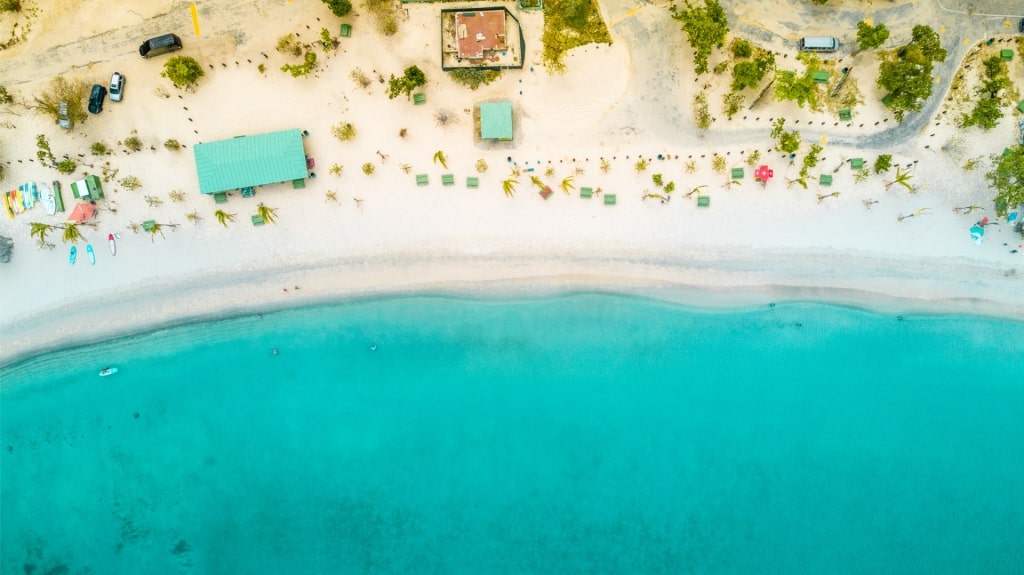
Magens Bay, St. Thomas
Set in the shape of a heart, Magens Bay on St. Thomas is one of the U.S. Virgin Islands’ most famous beaches. The calm and clear water is great for swimming and paddleboarding.
Magens Bay can fill up fast, especially during high season, so mornings are your best bet for peace. Amenities include a snack bar, changing rooms, restrooms, picnic areas, a restaurant, and a bar.
Also known for its soft white sand and calm, turquoise waters, Cane Garden Bay on Tortola is a favorite for swimming, snorkeling, and soaking up the Caribbean sun. Travelers interested in watersports will find plenty to do here, from paddleboarding to kayaking. When it’s time for a break, stop by one of the many bars and restaurants along the coastline.

The Baths, Virgin Gorda
If time permits, visit The Baths on Virgin Gorda, famous for the massive granite boulders that form a maze-like formation of narrow walkways, pools, and grottoes. For a bit of adventure, follow the marked trail through the rocks or simply take in the surroundings from the beach itself.
Shopping and Local Crafts
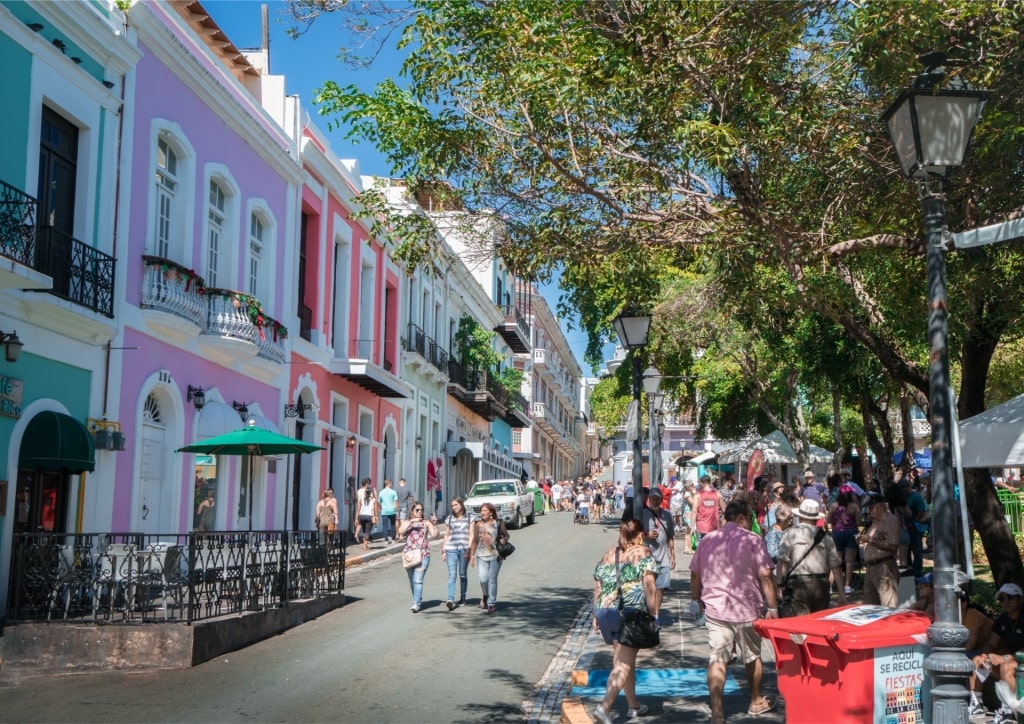
Old San Juan, Puerto Rico
Shopping for souvenirs in Puerto Rico and the Virgin Islands is an adventure and a perfect way to explore while sightseeing. Both destinations offer a mix of high-end luxury goods, handmade jewelry, and local art.
A stroll through Old San Juan in Puerto Rico takes you past inviting local craft shops. The cobblestone streets are lined with boutiques and artisan markets, making it easy to pop in and out of stores. Handmade jewelry is a highlight here, with designs ranging from timeless silver and gold pieces to bold earrings and necklaces that echo the vibrant colors of the historic buildings.
Artisan crafts like handwoven baskets and vibrant, hand-painted ceramics make great souvenirs and reflect Puerto Rico’s rich blend of Spanish, Taino, and African cultures.
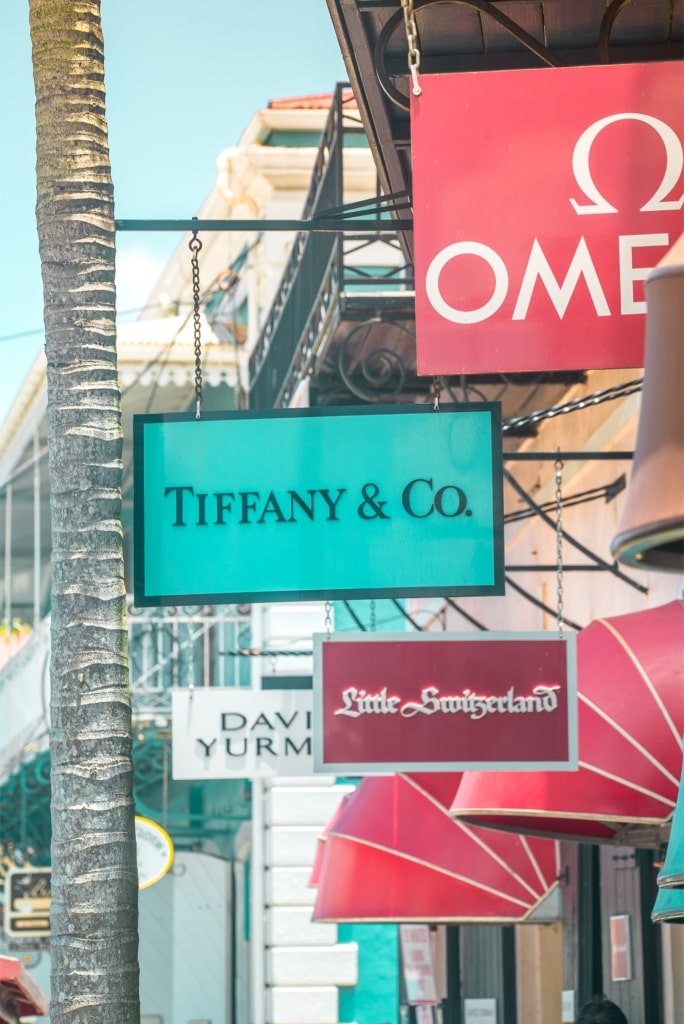
Charlotte Amalie, St. Thomas
The main shopping hub in the U.S. Virgin Islands is St. Thomas, and a big draw is the duty-free shopping that allows travelers to purchase high-end items without taxes.
When shopping in St. Thomas, you’ll find international luxury brands like Louis Vuitton, Cartier, and Gucci, alongside local artisans selling handcrafted items here. From wooden carvings to jewelry made from seashells found around the islands, there’s no shortage of one-of-a-kind pieces. Hand-poured candles inspired by the island also make great souvenirs.
Main Street in downtown Charlotte Amalie is a great starting point for browsing high-end stores and local vendor stalls. Whether you’re shopping for a luxury watch, a designer handbag, or a new piece of art, you’ll find it here. Be sure to explore the side alleyways, as smaller boutiques are tucked just out of view. For a wide selection of locally made goods, including crafts and souvenirs, Vendor’s Plaza is worth a stop.
Read: Best Things to Do in the British Virgin Islands

Puerto Rico
Are you ready to discover Puerto Rico or the Virgin Islands, or ideally, both? Browse Celebrity’s cruises to the Caribbean and plan your tropical adventure.
